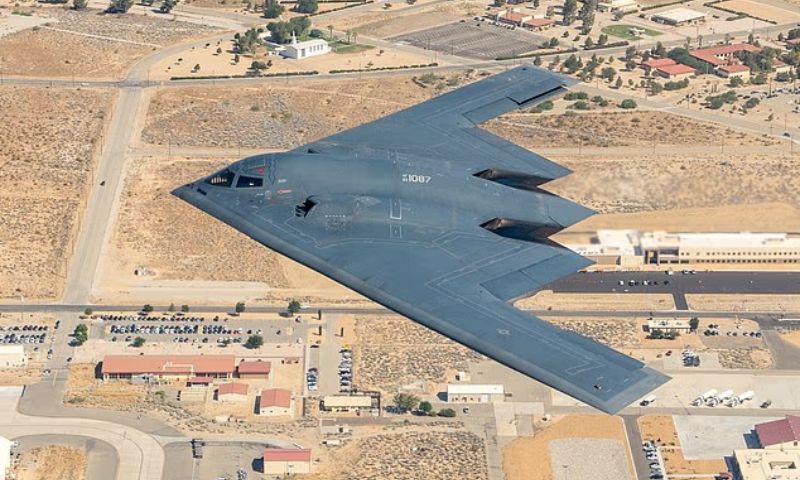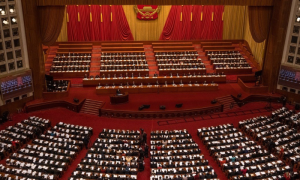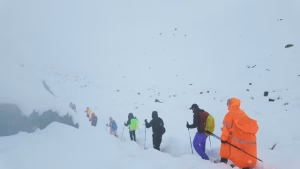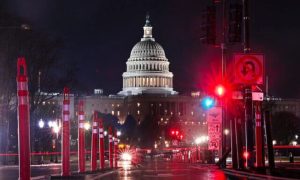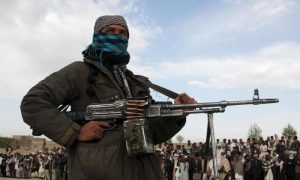Key points
- American bombers went “in and out and back without the world knowing at all”: US
- Trump administration claims US had “obliterated” Iran’s nuclear regime
- Iran confirms attacks but did not provide a specific account of events
ISLAMABAD: An 18-hour flight each way, multiple mid-air refuellings, and a series of decoys – this is how the mission to bomb Iran’s nuclear facilities played out, BBC cited General Dan Caine, the Chairman of the Joint Chiefs of Staff, the highest-ranking officer in the US military as claiming.
Although the full impact of what the US is calling ‘Operation Midnight Hammer’ is still unclear, a timeline of how the complex mission unfolded was laid out in a Pentagon briefing on Sunday morning, mere hours after the strikes, BBC reported.
American bombers went “in and out and back without the world knowing at all”, US Secretary of Defense Pete Hegseth said.
It all began just after midnight when Secretary Hegseth joined US President Donald Trump, Vice-President JD Vance, Secretary of State Marco Rubio, and elite Pentagon staff in the Situation Room at the White House to watch as a fleet of aircraft departed an American airbase in rural Missouri, BBC reported.
Under the cover of darkness, B-2 stealth bombers took off from Whiteman Air Force Base at 00:01 EDT (05:01 BST), the Pentagon said.
Their ultimate target: Iran’s most secure nuclear sites, BBC reported.
Atlantic Ocean
The subsonic jets, which travel just below the speed of sound, flew over the Atlantic Ocean loaded with powerful “bunker buster” bombs capable of penetrating concrete over 18m (60ft) deep.
It’s the kind of weaponry needed to hit Iran’s nuclear enrichment facility at Fordo, which is buried below a mountain deep underground and considered to be the epicentre of the country’s nuclear programme and the US is the only country in the world known to possess this type of weapon, according to BBC.
But the world wasn’t watching – yet. All eyes were facing west, towards the Pacific Ocean, following reports bombers had been sent to the US island territory of Guam.
“While the deployment is not being officially connected to discussions around the US joining Israel’s war on Iran, few will doubt the link,” the BBC wrote at the time.
“A deception effort”
The planes that flew west over the Pacific were “a deception effort known only to an extremely small number of planners and key leaders,” BBC cited Gen Caine as saying.
“The main strike package comprised of seven B-2 spirit bombers, each with two crew members, proceeded quietly to the east with minimal communications,” he claimed.
BBC said that it could not independently verify the Pentagon’s description of the events.
And although satellite images can help show the extent of damage at the sites overnight, they can’t tell us the exact times when they were hit, BBC reported.
When the fleet made it to the Middle East, sometime around 17:00 EDT (22:00 BST), it was joined by support aircraft that helped protect the bombers by sweeping in front of them to look for enemy fighters and surface-to-air missile threats, in what Gen Caine called a “complex, tightly timed manoeuvre”, according to BBC.
Trump administration
But Iranian fighter jets didn’t take off and no air defences appeared to fire a shot, US officials claimed, according to BBC.
The Trump administration has proclaimed the subsequent events as a total victory, claiming the US had “obliterated” Iran’s nuclear regime. But the true extent of the damage, and its aftermath, has yet to be measured.
While Iran has confirmed the attacks, it has minimised the extent of the damage and has not provided a specific account of the sequence of events, BBC reported.
Iran’s foreign minister warned Sunday the United States and Israel crossed a major red line in attacking Iran’s nuclear facilities, according to AFP.










